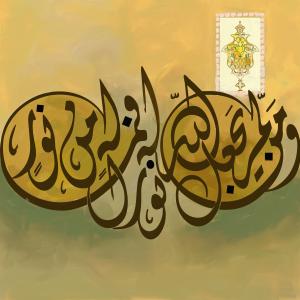Sale on canvas prints! Use code ABCXYZ at checkout for a special discount!

Kūfic script, in calligraphy is the earliest extant Islamic style of handwritten alphabet that was used by early Muslims to record the Qurʾān.
* Characteristics of Kufic Calligraphy
This angular, slow-moving, dignified script was also used on tombstones and coins as well as for inscriptions on buildings. Some experts distinguish Kūfi proper from Meccan and Medinese scripts, which were also used to copy the Qurʾān.
* Kufic- Why and How?
The script was called Kūfi because it was thought to have been developed at Kūfah in Iraq—an early Islamic centre of culture. Simple Kūfi was developed early in the Islamic era; the earliest surviving copies of the Qurʾān—from the 8th to the 10th century—were copied in it.
Later a floral Kūfi flourished, and several other varieties of the script developed, including foliated Kūfi, plaited or interlaced Kūfi, bordered Kūfi, and squared Kūfi. It went out of general use about the 12th century, although it continued to be used as a decorative element to contrast with the scripts that superseded it.
* Kufic calligraphy at its best
CATF has an expansive collection of calligraphy which encompasses a diverse variety of techniques and styles. Despite this rich diversity in our themes and styles, our collection of Kufic Calligraphy still tends to stand out. The beauty of this style lies in its difficulty of legibility.
Literacy may be limited but its aesthetic beauty has always been accessible to all, and it is this very beauty of these patterns that matters.
Our kufic calligraphy tends to be austere, and derives its beauty from the purity of its austerity; however simultaneously it lends itself to clever, even playful variations only limited by one's creativity.
CHECK OUT our incredibly varied and creative compendium of kufic calligraphy today at
1-catf.pixels.com